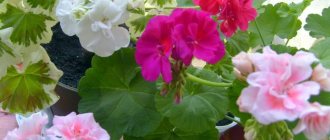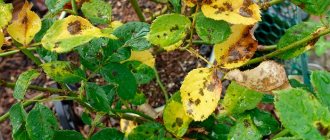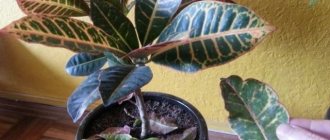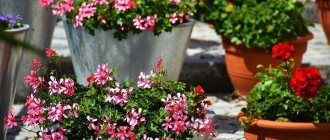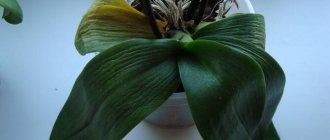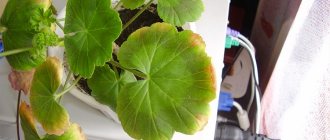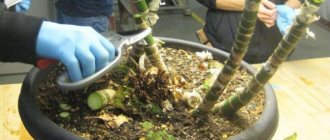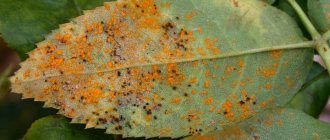Unpretentious, easy-to-care spathiphyllums can be found in apartments and offices; they decorate public buildings and provide landscaping for educational institutions. Without any tricks or labor on the part of the owner, in response to normal care, the spathiphyllum flower produces new lanceolate foliage and produces peduncles with a white, flag-like or blanket-like bract.
However, this wonderful plant may also have problems, which it signals by all available means, for example, by changing the color of the leaves, their withering or drying out. Why do spathiphyllum leaves turn yellow, and what should a gardener do in this case?
Feeding and replanting - necessary care for spathiphyllum flowers
Yellowness on the leaves of a recently healthy green bush appears quickly and can be a sign of a variety of problems. Due to the similarity of symptoms, even experienced hobbyists are rarely able to immediately find the reason for this plant behavior. But you cannot hesitate, since the death of the foliage entails a general weakening of the spathiphyllum, and sometimes can signal irreversible putrefactive processes on the roots.
Most often, the source of problems with spathiphyllum is in the care of the flower, or rather, in the lack of attention to the plant.
If the plant has bloomed profusely and for a long time, yellowing leaves may indicate fatigue of the bush, which has wasted all its strength and available nutrients. In this case, the foliage from the lower tiers is the first to begin to experience a similar deficiency, evenly changes color, and then withers.
Feeding can help the plant, and if the yellowed spathiphyllum has not been replanted for a long time, then transferring it to a new, looser pot with nutritious loose soil.
In the future, in order to avoid similar problems, you need to feed the plant twice a year and, if necessary, in the spring, replant the bush into a pot of the same size.
Treatment of the flower “female happiness”
Why Dieffenbachia leaves turn yellow - reasons
If the flower is already sick, it requires resuscitation measures. At the same time, assistance must be started as early as possible in order to save the plant. Actions depend on the provoking factor.
When the crop is depleted, many gardeners begin to apply large amounts of fertilizer. This is not recommended - it is better to move the flower to new soil.
When transplanting, the root system is sprinkled with soil at the same level. It is strictly forbidden to bury the growing point - this will negatively affect the flower.
Immediately after transplantation, the leaves may become pale. This is a natural process. Therefore, there is no need to tear them off. Once the leaves have fallen, you can apply fertilizer. In this case, the dosage is reduced by 2 times.
When a bush is damaged by pests, insecticides are used
When a crop grows strongly, replanting it is very problematic. In such a situation, it is worth carefully removing the top layer of soil and replacing it with a new fertile substrate. In such a situation, the feeding regime does not need to be changed.
If a crop is infected with parasites, they must be removed. To do this, the flower should be washed with soap or tobacco solution. If there are a lot of pests, it is better to use an insecticide. It needs to be used 2-3 times with an interval of 7-10 days.
Important! It is recommended to treat the bush itself and the soil. Many parasites live in the upper layers of the soil.
Lighting for spathiphyllum
Spathiphyllum turns yellow when it is in uncomfortable conditions for a long time. The most common mistake gardeners make is exposing the pot to direct sunlight. Although spathiphyllum is very light-loving, the scorching, especially summer sun causes yellowness and even burns of the leaf blades. But with a lack of sun, spathiphyllum reacts with slower growth and pale leaves.
If in summer the main enemy of the plant is the bright sun, then in winter excessive dry air is detrimental to spathiphyllum.
When the pot is located close to heating devices, it is unlikely that it will be possible to avoid withering of the above-ground parts and yellow ones. Yellowing and then death of the leaf begins from the tip, gradually spreading and occupying most of the leaf blade. As a result, the plant weakens, stops flowering prematurely and may die.
Therefore, if you want to see the plant healthy and beautiful, you can:
- remove spathiphyllum away from the battery;
- place a container of water nearby;
- use a humidifier;
- use a spray bottle to spray the plant.
In any case, the plant will respond with lush greenery. Slightly damaged leaves regain their previous color, and it is better to remove leaf blades that have begun to dry so that they do not become a breeding ground for harmful fungi and pests.
Symptoms
The main complaint is blackening of the leaf, which affects only the tip or spreads over the entire surface. This disease also manifests itself in the following:
- yellowing of leaves;
- presence of stains along the edges;
- dry ends;
- lack of flowers;
- growth slowdown.
Alarming symptoms can develop either immediately or after a long stay in the house. A few weeks after purchasing a new plant, it must be replanted. This is due to the fact that in the store, instead of a nutrient substrate, peat enriched with vitamins is used. By replanting a flower, you can remove rotten roots, get rid of random parasites, and also create the necessary soil.
Spathiphyllum turns yellow due to a violation of the watering schedule
If the leaves of a spathiphyllum turn yellow, and the color change begins from the edges of the leaf plate, on which a dried black border is formed, this may be a reaction of the flower to a violation of the watering regime:
- With a lack of moisture, the soil dries out and does not provide the plant with proper nutrition.
- Excessively moist soil, especially at a fairly low indoor temperature, is a serious risk for the development of rot and fungi parasitizing on spathiphyllum.
It is optimal if the substrate is constantly moist, but stagnation of moisture should not be allowed.
Therefore, in winter the intensity and frequency of watering is reduced. And in the summer, when the need for moisture increases, to reduce evaporation, the soil is mulched with pebbles or sphagnum moss.
Botanical characteristics of the plant
Spathiphyllum is a perennial herbaceous plant that does not have a stem. Its leaves are dark green in color, oblong in shape and located on petioles. It blooms effectively and for quite a long time. The flowers are white.
There are several varieties of this plant. Domestic gardeners grow the following varieties of spathiphyllum:
Spathiphyllum profusely blooming. The most common plant among its other species. It has a creeping underground stem. Its leaves reach a length of 20−22 centimeters, and the peduncle has a length of 22−25 centimeters. True to its name, it blooms almost all year round.- Spathiphyllum is pleasant. Also a fairly common houseplant. Has large leaves. The flower's cover is light green. Like the previous variety, it blooms almost the whole year.
- Spathiphyllum Wallis. This miniature indoor plant is of particular interest to gardeners. Flowering begins in early spring and ends in late autumn. A small blanket during its development turns from white to green.
If the plant does not bloom, the reason for this may be poor lighting or irregular watering. Old plants also bloom poorly.
Micronutrient deficiency is the cause of yellowing of spathiphyllum
What to do if the entire spathiphyllum leaves turn yellow? Most often, this symptom can be considered a sign of nutritional deficiency or deficiency of certain elements in the soil. First aid in this case is feeding with complex fertilizer for indoor plants. If the roots of the flower are completely entwined with the earthen ball, then it is better to immediately replant the plant, and, if necessary, divide a large bush.
Spathiphyllum is very sensitive to magnesium deficiency. A deficiency of this element leads to stunted growth and lethargy of the plant. In this case, the spathiphyllum leaves turn yellow in such a way that the veins remain green, and the tissues between them become yellow or brown. Such bushes are fed with magnesium sulfate.
Natural phenomenon
The nature of a female flower contains the fact of natural renewal. It spends a lot of effort for its full growth and flowering, delighting with its appearance. When an adult spathiphyllum is not subject to visible disturbances and problems, then a long flowering period is an understandable reason for the appearance of yellow leaves. A lot of energy is expended during this time, and the plant enters the desired dormant state when most of the leaves fall off. After which restoration begins, thus, female happiness renews the internal supply of minerals.
When a similar phenomenon occurs with a young flower that has not yet had time to bloom, this is quite understandable. Experts point out that during the process of intensive growth, a young plant is forced to expend a huge amount of vitamins, which contribute to further long flowering. It is the leaves that can turn yellow, thereby maintaining the entire plant in the desired mode.
In a very difficult situation, you can give the plant a warm shower (the gentle pressure of water should not harm the leaves).
Pests and diseases of spathiphyllum
Yellow foliage is not only a consequence of improper care of the spathiphyllum flower. Plants can be affected by pests and diseases that are no less dangerous than lack of nutrition or flooding of roots.
Among the pests that cause damage to plants, mealybugs, spider mites and thrips are more common. In this case, after identifying the source of danger:
- bushes are treated with insecticides;
- if soil pests are present, replant and feed.
As a preventive measure, it is reasonable to take only disinfected soil, which will help protect the bush from infection by harmful fungi.
We can talk about a disease of fungal origin in a situation where the lower leaves of the spathiphyllum turn yellow, begin to dry out, and brown spots, growing, occupy the foliage in the neighborhood. If urgent measures are not taken, the disease will invade the stems and roots, causing irreparable damage to the plant.
In this case, the infected parts of the plant will have to be cut off and treated with a fungicide. It would be useful to inspect the roots and shortened stem, since the spread of the fungus may be accompanied by the proliferation of putrefactive bacteria and damage to these parts of the plant.
Spathiphyllum is not at all capricious, but only a healthy plant that receives regular competent care can delight the gardener with bright greenery and abundant flowering.
What does blackening, yellowing, pale and drying foliage mean?
In addition to withering and deformation, leaf blades can change color. Based on these visible changes, you can determine why the condition of the flower is deteriorating:
- Leaf blades that have turned black at the tips indicate the appearance of gommosis, hypothermia, or the onset of putrefactive processes.
- Yellowed, drooping foliage indicates chlorosis or improper soil moisture.
- Gray-brown coating is a sign of gray mold.
- Leaves rolled into a tube indicate the presence of soft-bodied mites.
In most cases, it is possible to save a fading spathiphyllum. To do this, the cause should be identified, and if putrefactive processes are detected, the flower should be replanted, having previously removed the diseased areas of the root system. If the plant is affected by diseases and pests, it is necessary to treat it with special preparations or use proven folk methods.
External signs
Leaf desiccation is a process in which the leaf blade completely or partially changes its color, becomes yellow and loses turgor.
If old leaves turn yellow and fall off, then this process is due to the natural rejuvenation of the plant - there is no reason to panic in this case.
But if the change in pigmentation becomes widespread, then it is worth taking a closer look at the bush, identifying the cause of the ailment and taking measures to resuscitate the spathiphyllum.
Most often, yellowing manifests itself in the following forms:
- peduncles and leaves turn yellow and fade - this usually indicates errors in caring for the flower;
- yellowing of the leaves is accompanied by damage to their integrity - take a closer look at the back of the leaf, most likely you will replace insects;
- the leaves have changed color and drooped - this usually happens with excessive watering;
- a whitish cobweb is visible on the leaf blades - this means that the flower has encountered a spider mite;
- the leaves become flabby and lethargic - most likely, the plant is cold in the room in which it is located.
Other signs of the disease that accompany yellowing include: the appearance of brown spots, rotting of the stems, and the presence of mold on the ground.
What to do if the buds become dry?
To save the plant, you can use 2 methods.
Chemicals
Drying of flowers may be due to aphid infestation . pests infect the underside of the leaves and begin to feed on the juices of the plant. The flowers turn yellow, curl and begin to dry out.
- When pests appear, it is necessary to treat the plant with Aktara or Fitoverma.
- When infested with spider mites, the tips of the flowers begin to dry out. Effective drugs for pest control include Neoron and Actellik.
- Mealybugs can cause not only flowers to dry out, but the entire plant. Characteristic discharge appears on the roots. To combat the mealybug, you can use Confidor or Aktara.
Traditional methods
To combat aphids and spider mites, you can use onion peels. To prepare the solution you will need 100 g of raw materials and 5 liters of water. The liquid must be heated to 40 degrees. Filter the infusion and mix with a small amount of laundry soap. The resulting mixture is used to treat the affected areas of the plant.
An infusion of citrus peels is considered an effective remedy for combating mealybugs. Pour 100 g of dry peels with a liter of water and leave for 2-3 days in a cool place. The infusion is used to treat affected areas.
Preventive measures
Prevention includes the simplest manipulations:
- maintaining a sufficient level of humidity;
- keeping the plant only under diffused sunlight;
- proper watering and fertilizing.
At the first signs of pests or diseases, the plant must be immediately treated and planted in new soil.
Before you start growing spathiphyllums at home, you should not be afraid of the above problems. This plant is extremely unpretentious and therefore is able to actively grow and even bloom in the most unsuitable conditions. All that is required from the florist is attention to detail and a little patience.
Prevention
In order for the plant to quickly come to its senses after transplantation, it is necessary to create optimal conditions for it:
- place the flowerpot with a flower in a shaded place;
- provide sufficient humidity;
- Do not over-moisten the soil by watering and do not spray the plant for the first week.
The first month after transplanting Women's Happiness, it is not recommended to fertilize it.
When the first signs of poor condition of the spathiphyllum appear after transplantation, it needs to be provided with proper care. Prompt assistance and elimination of the source of trouble will help the plant not to die and recover in a short time.
Why it doesn’t bloom: ways to combat it
The flowering period of home spathiphyllum begins from the first days of spring until the cold days of autumn. The abundance of beautiful flowering ears directly depends on the care of the perennial.
Common reasons for the lack of flowers are the following:
- Irregular flowerpot shape.
- Lighting not suitable for active life.
- Uncomfortable winter.
- Lack of proper watering.
If a perennial refuses to bloom, it is necessary to provide it with the following conditions:
- A pot in which the roots of the plant will be tightly packed, without unnecessary empty space, is ideal for replanting.
- Please the perennial with its location on the east side of the windows.
- Provide diffused and soft light.
- It is advisable to water the flower by spraying water.
- Loosen the soil frequently.
- Add beneficial substances to water for irrigation.
- All dry ends of the leaves must be cut off.
- Give time for the soil to dry out.
“White Sail”, as the perennial is also called, will definitely bloom and delight you with very beautiful flowers. It is believed that an evergreen pet should not be given to anyone; there is a risk of losing one’s happiness.
Proper care of any plant always bears fruit. You just need to create the environment for life that it requires. And such manifestations as yellowing foliage on spathiphyllum will never cause grief.
When is it natural?
Despite the large number of reasons why a plant can turn yellow, there are also natural ones. An old plant (more than 5 years old) can get rid of unnecessary foliage in this way. Thus, it produces independent rejuvenation and prepares for the appearance of new leaves. You can wait until they fall off on their own, or you can cut them off at the base with sharp scissors for aesthetic reasons.
